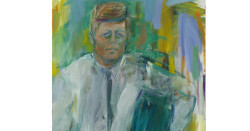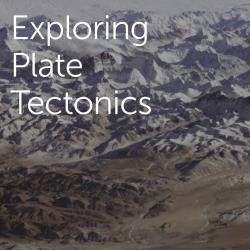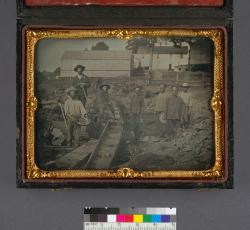Christina Shepard
I am an Intern at the Smithsonian Center for Learning and Digital Access. Here, I assist in developing digital learning resources and implementing professional development opportunities for teachers, librarians, and fellow museum educators. I hold a BA in Art History from University of North Florida and am pursuing a MAT degree in Museum Education at George Washington University.
Christina Shepard's collections
Zoology Introduction: Observing Pandas
<p>This lesson plan teaches innate and learned animal behavior by having students watch videos of Bao Bao, the Smithsonian National Zoo's panda, and answer questions about her behavior in the videos. The videos range from Bao Bao as a newborn to her first birthday and have quiz questions connected to them to help students better understand how to observe animal behavior. There is a hand out for students to read while watching the videos to better help them answer questions. There is also a chart attached that can be used by the teacher to write down the behavior of Bao Bao in each video in fifteen second increments. This teacher lesson plan can also be adapted to be used as a class assignment, if needed. </p>
 Christina Shepard
Christina Shepard
13
The Engineering Design Process
<p>This collection of teaching resources includes lesson plans and multimedia resources about the engineering design process. There are several lesson plans on architecture and engineering concepts of design, such as simple shelters, balance, and materials. The videos and illustrations explain what engineers do and the fundamental engineering design process.</p>
<p>This lesson includes:</p>
<ul><li>A video by Crash Course Kids titled "What's an Engineer? Crash Course Kids #12.1" (4:30)</li><li>A video by Crash Course Kids titled "The Engineering Process: Crash Course Kids #12.2" (5:17)</li><li>Two models of the Engineering Design Process by Preschool Steam</li><li>Engineering/architecture activities from the Cooper Hewitt, Smithsonian Design Museum for Pre-Kindergarten-1st Grade</li></ul>
 Christina Shepard
Christina Shepard
11
Scientists: What do they do?
<p>Students, please scroll through the videos in order to learn about four areas of science with Smithsonian scientists: Earth science, Marine science, Animal science, and Space science. There is a Smithsonian online interactive in each section under learn more.</p>
<p><em>Tags: frogs, elephants, ocean, snails, dinosaur, leopard, elephant</em><br /></p>
 Christina Shepard
Christina Shepard
26
Jackson Pollock
<p>Are you interested in learning about Jackson Pollock and his "drip" method of painting? If you are, this is the perfect collection for you!<br /></p>
<p>You will be asked questions throughout this collection to help you better understand Jackson Pollock's art work.</p>
 Christina Shepard
Christina Shepard
18
Image Analysis: San Francisco Chinatown
<p>In this activity, you will learn about Chinese American traditions and culture through resources related to San Francisco's Chinatown. Each artifact, video and image includes questions that will help you think about the significance of each and its connections to Chinese American communities.</p>
<p><em>This Smithsonian Learning Lab collection received Federal support from the Asian Pacific American Initiatives Pool, administered by the Smithsonian Asian Pacific American Center. </em> <br /></p>
<p> #APA2018</p>
 Christina Shepard
Christina Shepard
10
Exploring Plate Tectonics
<p>This student activity introduces students to plate tectonics, volcanoes, earthquakes, rocks, and fossils through selected Smithsonian images, diagrams, videos, articles and activities supplemented with additional instructional materials. Features of this collection have been included or designed to spark excitement by teaching students through different forms of media. The sorting activities (see pink and white tile at the end of the collection) let students play the roles of archaeologists, anthropologists, and curators by sorting rocks and fossils based on age. At the conclusion of the activity, students will be able to think critically about how cities prepare for volcanoes and earthquakes by answering questions about current events.</p>
<p><strong><u>STUDENT INSTRUCTIONS:</u></strong></p><p>If there is a paper clip on the left side of the slide, click on it and follow instructions.
</p>
<p><i>Tags: archaeology, anthropology, margins, subduction, hotspot, oceanic, crust, continental, rift, transform, shield, spreading, ridge, trench</i></p><p><em></em></p>
 Christina Shepard
Christina Shepard
26








